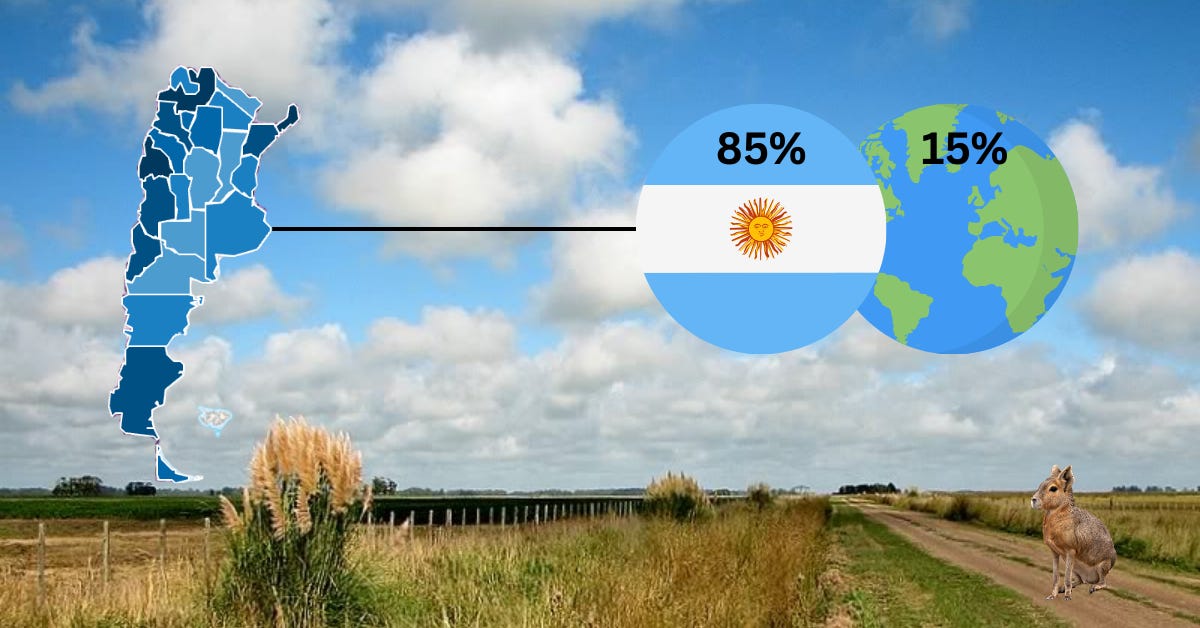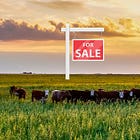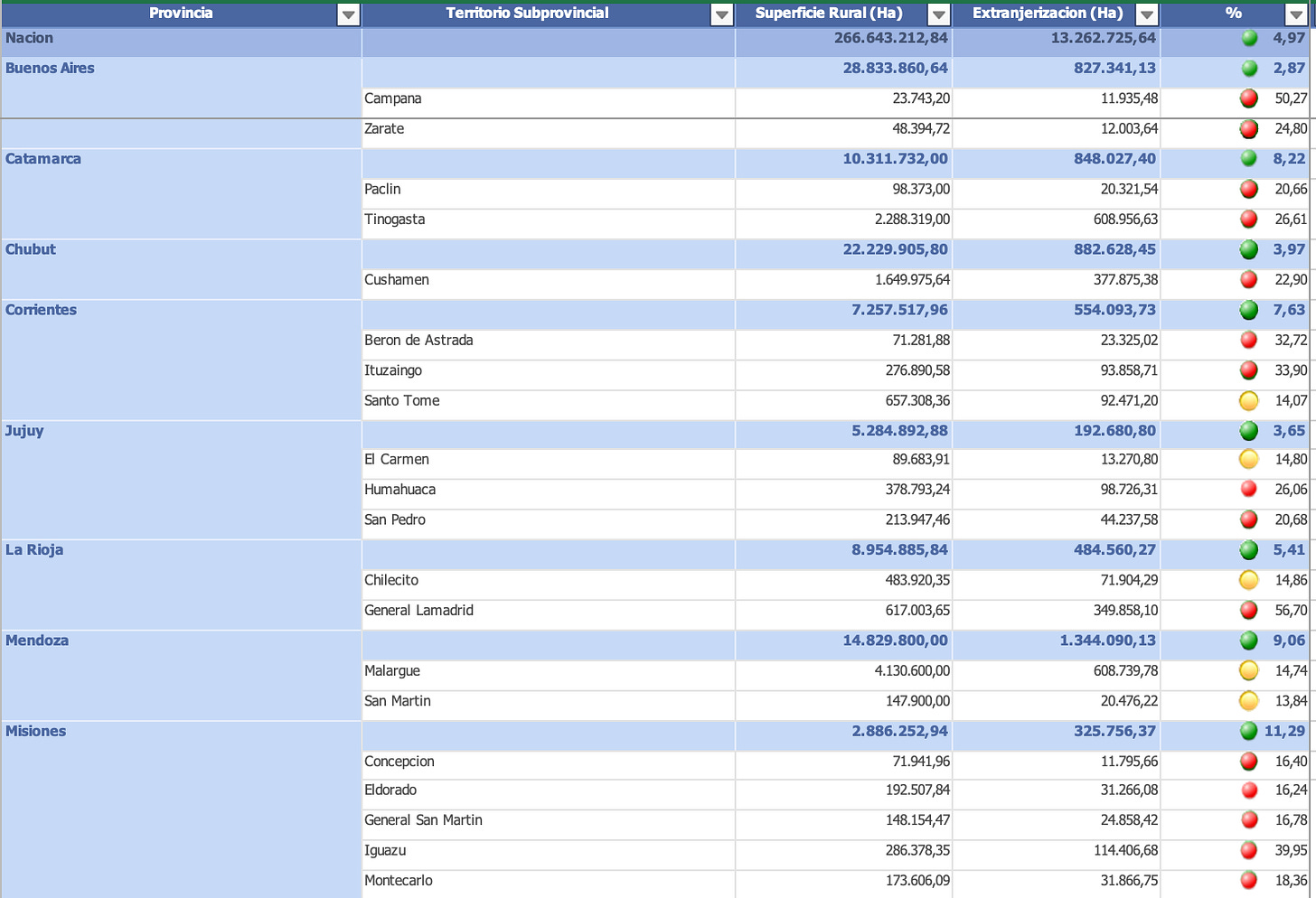Update on the Ley de Tierras
The current state of foreign land ownership in Argentina
Welcome Avatar! In his initial deregulation decree, Javier Milei repealed the law limiting foreign land ownership, the “Ley de Tierras”, Law No. 26737. There have been appeals since to try to block this repeal, and we are getting close to a Supreme Court resolution. Let’s dig in on the current state of foreign ownership in Argentina.
One of Javier Milei's first measures upon assuming the Presidency, was to repeal the Ley de Tierras and eliminate the limit on foreigners purchasing hectares anywhere in the country. The Executive Branch's decree issued on December 20, 2023, included the repeal of the so-called Ley de Tierras, which, under the guise of national sovereignty, established a limit on the purchase and possession of large tracts of land by foreigners.
Buying property in Argentina - Part 2 goes into the specifics of the Ley de Tierras and the percentages of foreign ownership per province, and Going Back to Alberdi discusses Milei’s decree and more in depth.
Law 26737 on the Protection of National Domain over the Ownership, Possession, or Holding of Rural Lands was enacted in December 2011 underPresident Cristina Kirchner, and established that foreigners could not own more than 15% of the land in the country, a province, or a municipality.
The regulation also prohibits foreigners of the same nationality from having more than 30% of the total permitted 15%.
The original land law was no impediment for buying rural property in most locations, but in some prime locations and departments it did restrain foreign investors from buying more.
These new regulations did not affect those who already owned land prior to the law's passage, and in some municipalities this limit had been exceeded and remains so today. Back in 2011, nationwide 50 provincial departments exceeded the limit, and according to the registry updated in April 2023 (see below), there are now 30 in that condition.
It is important to understand that this law only applies to “rural land”, which is determined as follows in Article 1:
For the purposes of this law, rural land shall be understood as any property located outside the urban area, regardless of its location or purpose.
That means that there are no limits to foreign ownership inside urban areas and cities, and apartments etc do not fall under this category.

The law also created the National Rural Land Registry, which established that no province should exceed the 15% foreign-owned land limit. According to its latest update in April 2022, Salta was closest to this limit, with 11.56%, followed by Misiones (11.07%), San Juan (10.48%), Corrientes (9.87%), Mendoza (9.11%), Catamarca (8.64%), and Santa Cruz (8.11%). So on a provincial level, none had reached the 15% threshold as of yet.

However on a department level, there are multiple cases that have hit the limit: Cruz Alta (Tucumán), Jimenez (Santiago del Estero), Garay (Santa Fe), Magallanes (Santa Cruz), among others:
The downloads below include the complete list of departments and percentages, and on the second tab I’ve singled out only the highest percentages from yellow to red:
This data may not be complete, thanks to a modification of the law made by President Macri in 2016, which eliminated the information regulations that had to be submitted to the National Registry and allowed foreign companies to be considered national, according to their shareholding structure.
What is interesting is that provinces where one would expect more foreign land ownership like Córdoba, La Pampa, Entre Ríos and Buenos Aires itself — more on the reason why in the paid section —, ownership levels are lower than in Salta, Mendoza and Misiones.
The case of Bariloche Department, in Río Negro, which corresponds to the homonym city and the El Manso, El Foyel, and El Bolsón areas, is one example of the decline in land ownership by foreigners. In 2017, 21.3% of the land area was in this condition, and this has currently dropped to 13.6%, meaning that only 23,050 hectares now belong to foreign owners and 1.4% is once again up for grabs.
Americans are the foreigners who own the most land in Argentina, with more than 2.7 million hectares, followed by Italians with just over 2 million, Spaniards with just over 1.8 million, Swiss (851,534 ha), Chileans (769,393 ha), Uruguayans (577,985 ha), Canadians (492,618 ha), French (373,408 ha) and Dutch (321,541 ha).
Another key point of the land law is Article 10, which prohibits foreigners from owning or possessing property that contains or borders large, permanent bodies of water or is located in border security zones. Many locations in Neuquén and Río Negro fit this description.
Below we will go over some the most valued areas with highest percentages, and the current state of the law after the latest appeals.






